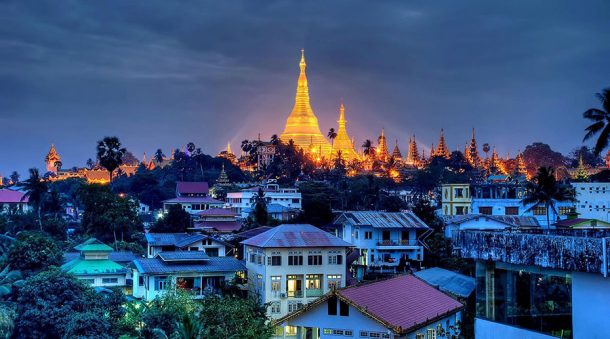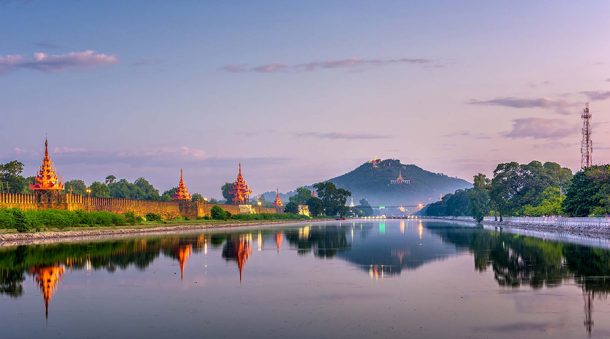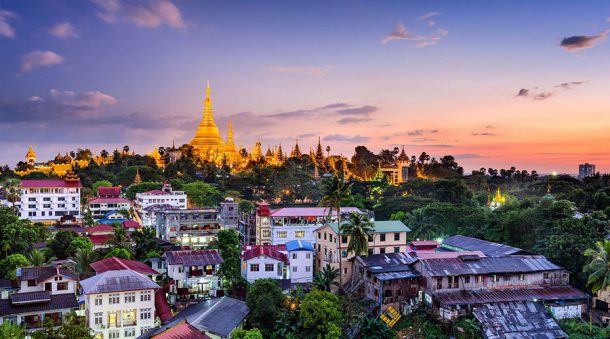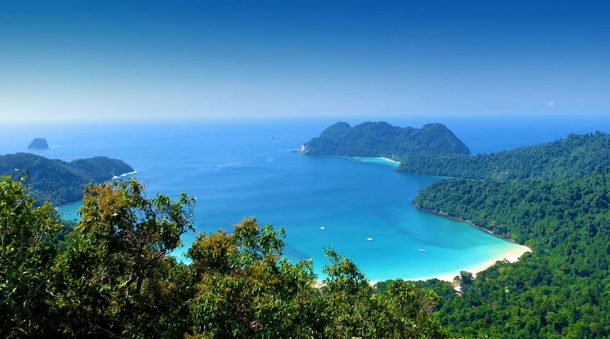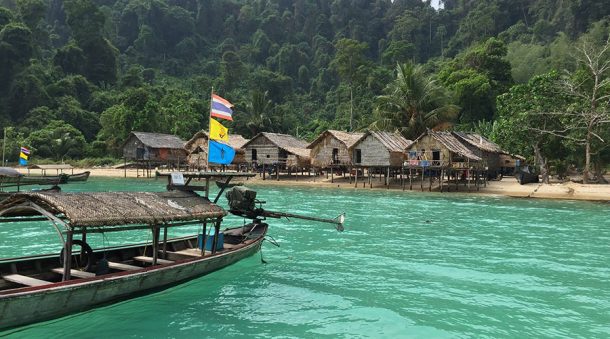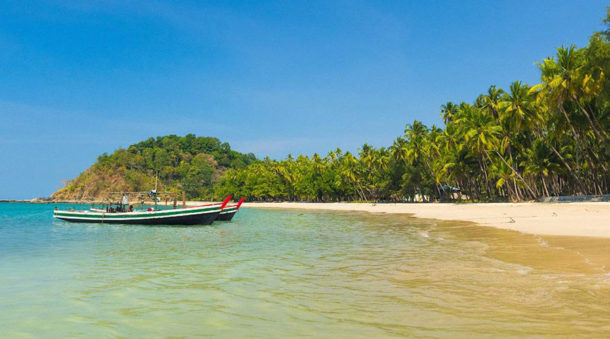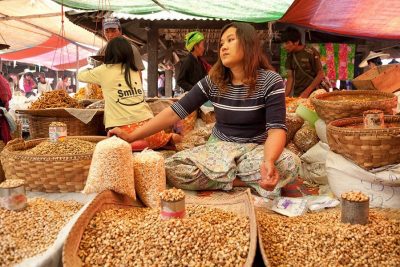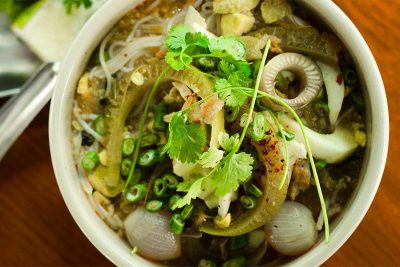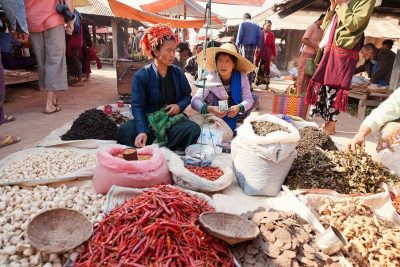
conscious journeys – dmc burma
We are a local Tour Operator based in Yangon, the former capital of Burma (or Myanmar), and thanks to our experience we are the perfect partner to organize trips and assist and satisfy the customer in all his travel needs. All itineraries are designed and built by us to offer an authentic experience and get into the heart of Burmese culture.
Burma
Burma (or Myanmar) is a country in South Asia that has a total population of about 42 million and borders India, Bangladesh, China, Thailand and Laos, overlooking the Gulf of Bengal.
The capital of Burma is Naypyidaw, the official language is Burmese and the prevailing religion is Buddhist (89%).
Myanmar, known in the West as Burma, is the largest country in South-east Asia. A fascinating and magical land, it is now a country where power is still in the hands of bureaucrats and military. Most of the population still lives according to the rhythms of rural life and is deeply religious, but without falling into fanaticism, which allowed it to survive the harsh military dictatorship.
The first inhabitants of these lands were the Mon, who settled on the banks of the Irrawaddy River. The Burmese, or Bamar, migrated from Tibet to the Irrawaddy valley in the 9th century and in 849 they formed the powerful kingdom of Pagan (now Bagan), which had its most prosperous period during the reign of King Anawratha (1044-1077), when the influence of the Burmese became so extensive that it crossed the territorial borders and controlled parts of Indochina from 1100 onwards. This was what was later defined as the first Burmese empire. Towards the end of 1200, the kingdom suffered the invasion of the Mongols led by Kublai Khan and the kingdom disintegrated. It was only in 1364 that the Burmese managed to regain control, creating a new state with Ava as its capital: this was the heyday of Burmese culture. In the meantime, the Mon people had re-established themselves in Pegu (Bago), which had become a thriving commercial and religious center. The Burmese, who had fled from Ava, united under the leadership of King Tabinshwehti, who reunited Burma and initiated the Second Burmese Empire, bringing the country into a phase of renewed prosperity. Unfortunately, the peace that was found lasted very little because of rebellions and the lack of resources that would allow full control of the imperial acquisitions.
In 1613 King Anaukpetlun, who had expelled the Portuguese invaders, founded a new dynasty in Ava, but it was destroyed in 1752 by the rebellion of the Mon, supported by the French. Alaungpaya, the leader of a small village, built the third Burmese empire with the Konbaung dynasty and ruled from 1752 to 1760. Conflicts with Siam put the empire to the test and even the Qing Dynasty of China, which feared the growth of Burmese influence, tried to invade it four times from 1766 to 1769, but without success. In the Anglo-Burmese wars (1824-1826, 1851-1852 and 1885-1886), Burma failed to drive out the British and was transformed into a province of British India. In 1937 it separated from India. In 1942 the Japanese invaded Burma to drive out the British. But the British reacted and in July 1945 they regained the country, with the help of the Anti-Fascist People’s Freedom League (AFPFL), led by Aung San. Aung San became vice-president of the Executive Council of Burma in 1947, but that same year he was assassinated by his political rivals. In early 1948 Burma became an independent republic under the name Union of Burma, with Sao Shwe Thaik as president and U Nu as prime minister. Many minorities began to demand the establishment of a federal state, leading to armed clashes against the state, which began a harsh repression. In 1962 there was a coup d’état by the military and since then General Ne Win ruled the country for 26 years, following socialist policies, nationalizing industries, suppressing political parties and banning free trade. His actions soon led to the isolation of the country from the rest of the world. Win resigned in 1988, after many student revolts, but martial law was proclaimed and General Saw Maung led another coup. In 1990 there were free elections, after 30 years of repression, and the National League for Democracy, led by the Nobel Peace Prize winner and daughter of Aung San, Aung San Suu Kyi, obtained 392 members in the Constituent Assembly. Immediately, however, the Council for Restoration of Law and Order of State, with the help of the army, overthrew the assembly and arrested Aung San Suu Kyi and other party leaders. The name of the country was changed from Burma to Myanmar.
Since then Aung San Suu Kyi lived a very hard time: released in 1995, she was arrested again in 2000, released in 2002, and arrested again in 2003. On 27 March 2006, the military junta moved the capital from Yangon to Naypyidaw. International pressure forced the military junta to grant a constitutional referendum in 2008 for a new Constitution, still considered undemocratic by the opposition as it granted the armed forces 25% of the seats in parliament. The 2010 elections were boycotted by Aung San Suu Kyi’s party because they were considered not free. The government subsequently agreed to the release of Aung San Suu Kyi and 200 other political prisoners and granted some reforms. In the 2012 elections, the National League for Democracy triumphed, obtaining 43 out of 46 seats, and in 2015 its success was reconfirmed.
BURMA TOUR
In Burma we offer several trips of responsible tourism, and in all itineraries you can not miss visits to the former capital of Burma, Yangon, the city of Mandalay, Inle Lake and the valley of the temples of Bagan.
Some Burma tours will also take you to small villages, to let you observe the daily life of Burmese people who live far from the cities, respecting the times of nature and in symbiosis with it. The long isolation of the country during the military dictatorship has protected Burma’s cultural identity, making it the least westernized country on the continent, almost an exception to other Asian countries. All you have to do is to choose one of our trips to Burma.
THE BEST OF MYANMAR
Duration: 12 days
Myanmar is one of the most beautiful and untouched countries in Asia. The sustainable tourism tour is designed to offer the best, with a relaxed pace.
Great for: Private trip
THE ESSENCE OF BURMA
Duration: 9 days
This trip to Burma is designed for people who have little time and want to experience the wonders that the country has to offer.
Great for: Private trip
BURMA: TREKKING, TRIBES AND TEMPLES
Duration: 13 Days
A wonderful and culturally rich country, oppressed by the military regime, Burma has recently taken its first steps towards democracy. This tour of Burma will show you its authenticity.
Ideale per: Group Tour
BURMA AND MERGUI ISLANDS
Duration: 16 days
This tour will let you discover all the beauties of Burma and will continue with a seaside stay on the Mergui Islands.
Great for: Private trip – Honeymoon
CRUISING IN THE ANDAMANS AND MOKEN EXPERIENCE
Duration: 9 days
With an Andaman Sea cruise you can walk on long beaches, snorkel in turquoise waters and explore the tropical forest.
Great for: Private trip
Here you can find out what travel extensions you can apply for in Burma.
Great for: Tour Extensions
BURMA TRAVEL EXTENSIONS
Naypyidaw – The capital of Burma since November 2005, located about 300 km from Yangon. The city is witnessing a very fast development, with a consequent increase in population.
Yangon – the former capital of Burma, the most populated city and the most important center of the country (former Rangoon, anglicisation of the local name). It was founded under the Mon dynasty in the 11th century, under the name Dagon, around the pre-existing Schwedagon pagoda and was initially a small fishing village. King Alaungpaya conquered it in 1755, during his campaign to unify the village. He changed its name from Dagon to Yangon. During the first Anglo-Burmese war between 1824 and 1826 it was conquered by the British, but it was immediately returned at the end of the conflict. A fire destroyed it in 1841. From 1852 it was again under Anglo-Saxon rule and had to wait until 1948 to regain its autonomy.
Bago – also known as Pegu, was founded by the Mon people and it’s an important industrial centre. It was the capital during the British colonization.
Mandalay – Historic city, second largest city in the country as a tourist center, third in number of inhabitants. It is also an important commercial port. It was founded in 1857 by Emperor Mindon Min as the capital of the Burmese kingdom until the British conquest in 1885. It is rich in monasteries, temples and parks and has a Royal Palace.
Bagan – Currently an archaeological site famous for the hundreds of pagodas that dot its valley. It was founded in 874 A.D. and became an important centre. Its ruins cover an area of about 10 square kilometers. Most of the buildings were built between 1000 and 1200. In 1057 King Anawrahta wanted to transform it into a religious centre and since then Bagan has been a reference point for studies in this field. In 1287 the sacking by the Mongols deprived Bagan of many religious relics.
Inle Lake – Second largest lake in the country, with an area of 72 square kilometers. It has shallow waters, with a maximum depth of 390 cm, which can increase by 160 cm during the rainy season. Here you can admire typical villages on stilts
Ngapali – seaside resort with long beaches of fine white sand, a place that attracts many tourists.
From an administrative point of view Burma is divided into states and divisions:
States:
Chin, Kachin, Kayah, Kayin, Mon, Rakhine, Shan.
Divisions:
Ayeyarwady (Irrawaddy), Bago (Pegu), Magwe, Mandalay, Sagaing, Tanintharyi (Tenassarim), Yangon (former capital of Burma).
BURMESE CUISINE
The Burmese cuisine is very varied, thanks to the contribution of the many ethnic groups that live in the country. Moreover, thanks to its location, the cuisine has received influences from neighbouring countries such as China, India and Thailand. Typical and frequent is the use of fish products such as fish sauce and ngapi, fermented fish. Fish dishes are obviously widespread in coastal areas, while inland there is more use of meat and poultry, for example in Mandalay. Burmese cuisine also includes a wide variety of salads, prepared with many ingredients including spaghetti or vermicelli of rice or wheat, potatoes, ginger, pickled tea leaves, tomato, lahpet leaves and fermented fish paste. In cities they are often offered as a quick meal.
Mohinga – It is a breakfast dish and is considered the national dish. It is rice vermicelli in curry soup.
Onnokauswe – Noodles dish in coconut milk soup
Laphet Thote – Salad of fermented tea leaves, lettuce and dried fruit accompanied with rice
Meeshay – Chinese dish with noodles in broth with herbs and meat
Palata – Indian fried bread, served with sugar for breakfast or with meat for lunch and dinner
Shan Food – Typical dish of the Inle Lake area, particularly tasty and spicy
USEFUL INFORMATION FOR BURMA
How to get here
Passport: necessary, with a residual validity of not less than 6 months from the date of expiry from the moment of entry into the country.
Entry Visa: you can request e-visa directly online.
Main airport: Yangon.
Burma Climate
Burma has a tropical climate and is subject to two monsoons, one from the southwest with clouds and downpours from June to September, and one from the north with less discomfort from December to April. The best time to visit the country is from November to March.
Time Zone
The time is +5:30 GMT
Currency
The local currency is Kyat, with an exchange rate of about 1€ = 1380 Kyat, although the dollar is commonly used. The currency exchange can be done at the many exchange counters, also present in the main airports or banks operating in the country. Kyat is not convertible, is legal tender only in Myanmar and is used for local expenses, but not for the purchase of airline tickets, both domestic and international, which is normally made in dollars.
Burma
Local hospitals are mostly deficient and inadequate, equipped with obsolete equipment and with limited availability of medicines. Before travelling to Burma, it is advisable to take out an insurance policy that can cover not only medical expenses, but also any emergency repatriation or transfer of the patient to another country. In case of accidents or serious illnesses, it is highly recommended to return to Italy or hospitalisation in Bangkok or Singapore.
There are diseases typical of tropical areas such as: amoeba, dengue, tuberculosis, malaria, dysentery, hepatitis A and B, cholera and typhoid. Recently there are increasing frequency of bacteriological and virological epidemics related to food, treated with poor hygiene practices. Dengue fever and malaria are endemic in Myanmar, particularly during the rainy season (May-October), so the repeated use of mosquito repellents during the day and night is recommended.
After an examination by your doctor they are recommended:
– antimalarial prophylaxis, if you go to inland and rural areas;
– vaccinations against: hepatitis A and B (widespread among the local population), Japanese encephalitis, typhoid, rabies, diphtheria and tetanus;
– do not drink running water, milk and locally produced beverages, always avoiding the addition of ice;
– avoid the consumption of fresh vegetables and fruit that have not been well washed and disinfected;
– protect yourself from insect bites 24 hours a day.
– avoid barefoot walking to prevent fungal or parasite infections;
– avoid entering watercourses or lakes.
The polio vaccine is also recommended. If you have been vaccinated against polio as a child, it is recommended to check if you need a booster dose. If you are unsure, contact your doctor or the appropriate vaccination centre. Vaccinations are mandatory: Vaccination against yellow fever is mandatory for all travellers over 1 year of age from countries at risk of transmitting the disease, excluding Panama, as well as for travellers who have even spent more than 12 hours at the airport of a country at risk of transmitting the disease.


